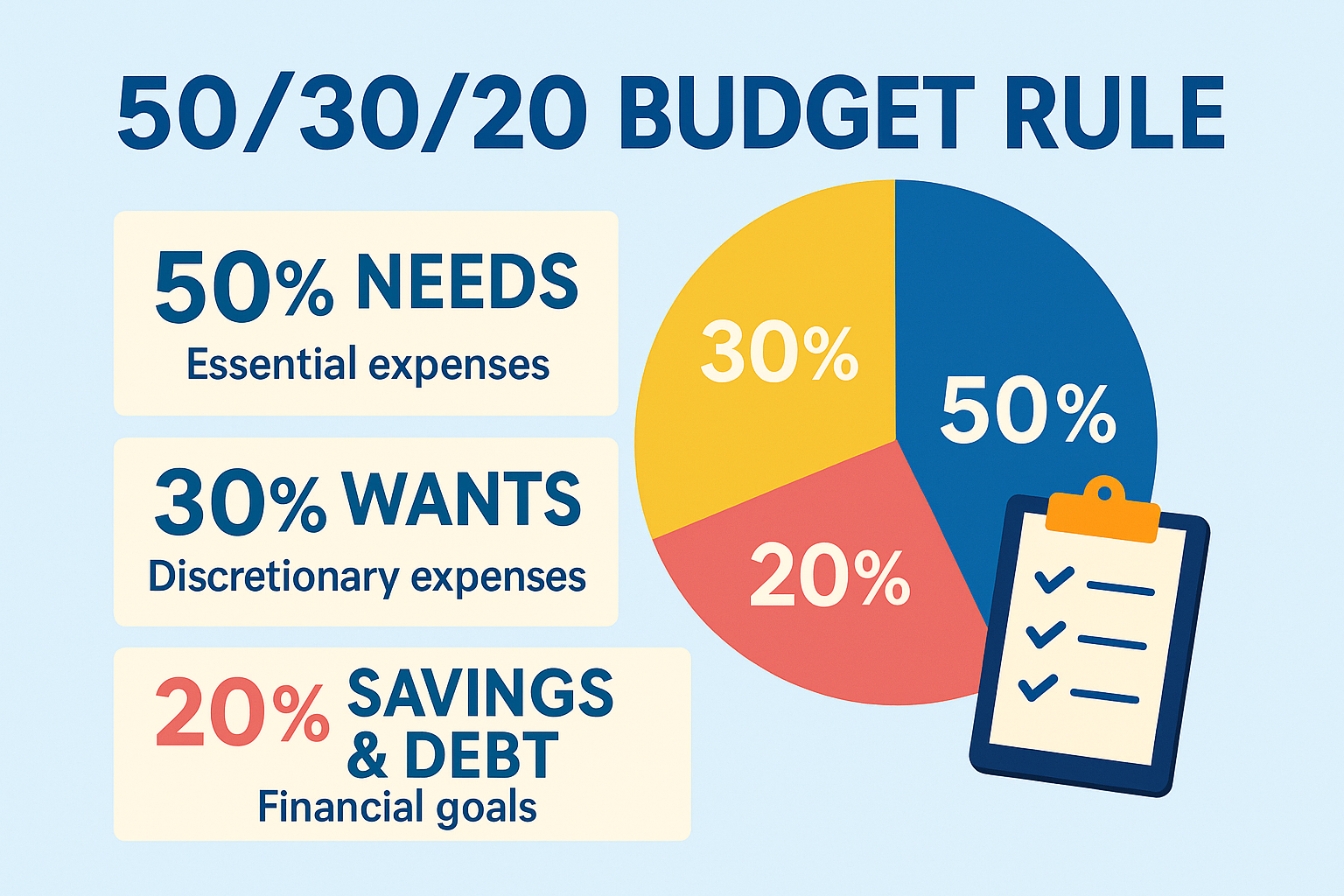
If you’ve ever struggled to create a monthly budget that actually works, the 50/30/20 rule might be the simple solution you need. This timeless budgeting method helps you divide your income into clear spending categories, making it easier to control your finances — even if numbers aren’t your thing.
Let’s break down what the 50/30/20 budget rule is and how you can start using it today (without needing a finance degree).
What Is the 50/30/20 Budget Rule?
The 50/30/20 rule is a budgeting guideline that divides your monthly after-tax income into three categories:
- 50% for Needs: Rent, utilities, groceries, insurance, and essential transportation
- 30% for Wants: Dining out, entertainment, travel, subscriptions
- 20% for Savings & Debt: Emergency fund, retirement, debt repayment, and long-term goals
It’s a flexible structure — and that’s what makes it so popular.
Why the 50/30/20 Rule Works
- It’s simple: No complicated spreadsheets or budgeting apps required
- It’s realistic: Allows room for fun spending without guilt
- It prioritizes savings: Forces you to pay yourself first
- It works for different income levels: Especially helpful when you need to budget on a low income and want to find balance
How to Use the 50/30/20 Rule in Real Life
- Calculate your monthly take-home income
Add up your post-tax income from all sources. - Apply the percentages:
Let’s say you earn $3,000/month:- Needs: $1,500
- Wants: $900
- Savings/Debt: $600
- Track and adjust
Use a monthly budget calculator (like the one on our homepage) to see if you’re overspending in one category. If rent alone eats up 60% of your income, you may need to adjust or explore alternative housing. - Review monthly for mistakes
New to budgeting? It’s easy to make common budgeting mistakes, like underestimating your spending or forgetting annual expenses. Review and tweak each month.
Can You Use the 50/30/20 Rule on a Low Income?
Absolutely. If you budget on a low income, the 50/30/20 rule can still be helpful — though you might have to modify the percentages. For example:
- 60% Needs
- 20% Wants
- 20% Savings/Debt
Or even:
- 70% Needs
- 10% Wants
- 20% Savings/Debt
The idea is to create a structure that works for you, not follow the rule blindly.
Final Thoughts
The 50/30/20 rule is not a one-size-fits-all solution, but it’s a great starting point for building a practical monthly budget. Whether you’re just getting started or fixing old budgeting mistakes, this rule helps bring clarity to your spending — and peace of mind to your wallet.
